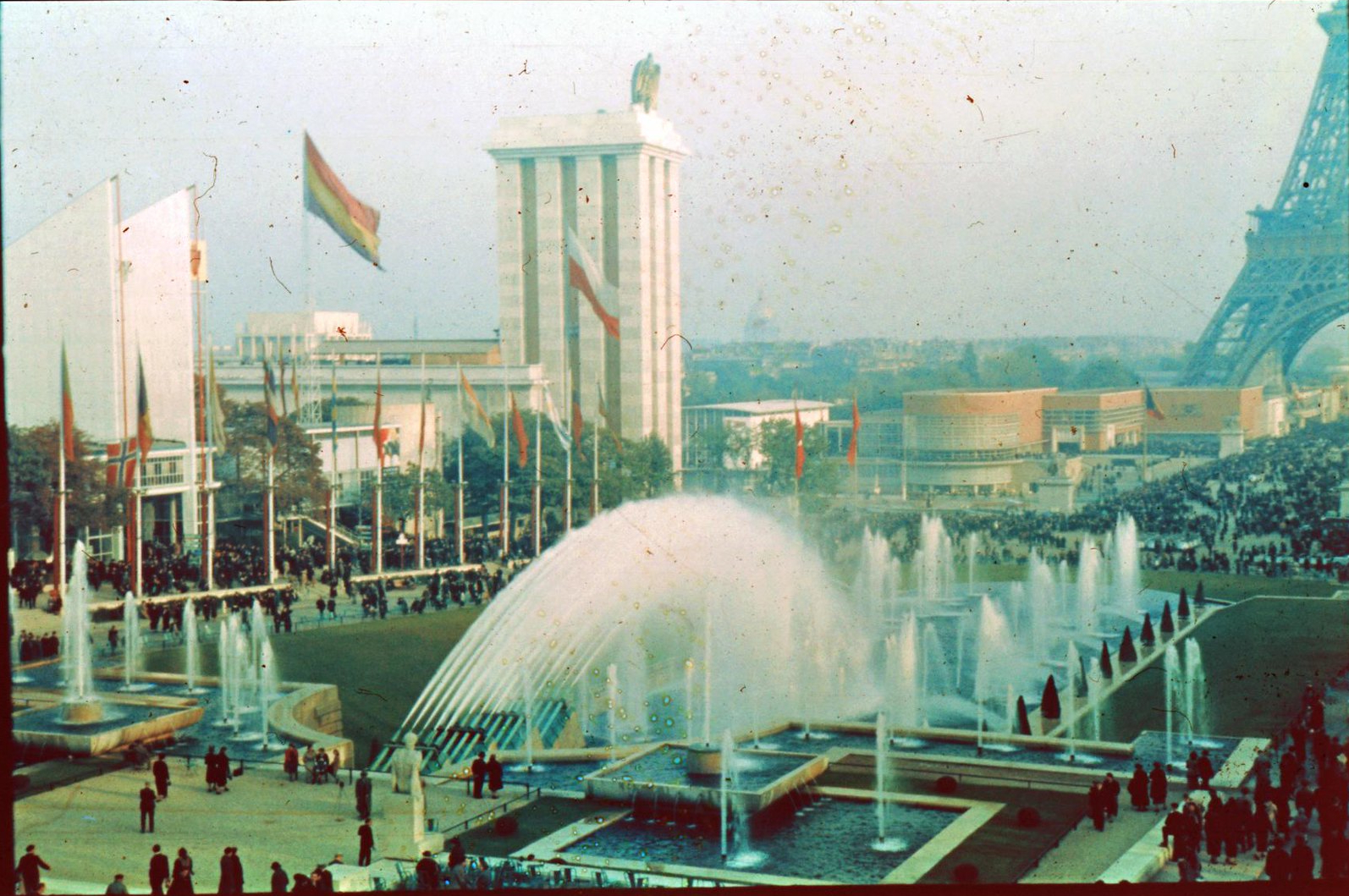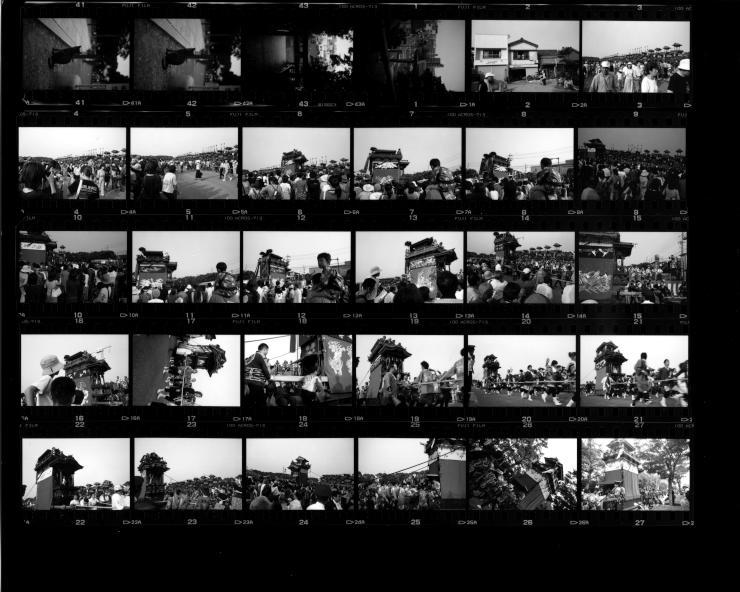|
Agfa Clack
The Agfa Clack is a box camera produced by Agfa from 1954 to 1965. It was sold in North America as the Agfa Weekender. It is a simple camera which was aimed at the mass market. About 1.65 million were produced, more than all other Agfa box camera models combined. It uses 120 film, creating large 6x9 negatives that were usually contact printed (transferred directly from the negative onto photographic paper without enlarging). It has only one shutter speed, and, depending on model, either a single f/11 f-stop In optics, the f-number of an optical system such as a camera lens is the ratio of the system's focal length to the diameter of the entrance pupil ("clear aperture").Smith, Warren ''Modern Optical Engineering'', 4th Ed., 2007 McGraw-Hill ... or a choice of two. The Agfa Clack played a central role in the 2013 novel, ''Klack'', by German author Klaus Modick. References *Hans-Dieter Götz: ''Box Cameras Made in Germany. Wie die Deutschen fotografieren lernten' ... [...More Info...] [...Related Items...] OR: [Wikipedia] [Google] [Baidu] |
Box Camera
A box camera is a simple type of camera, the most common form being a cardboard or plastic box with a lens in one end and film at the other. They were sold in large numbers during the late 19th and early 20th centuries. The lenses are often single element designs meniscus fixed focus lens, or in better quality box cameras a doublet lens with minimal (if any) possible adjustments to the aperture or shutter speeds. Because of the inability to adjust focus, the small lens aperture and the low sensitivity of the sensitive materials available, these cameras work best in brightly lit day-lit scenes when the subject is within the hyperfocal distance for the lens and of subjects that move little during the exposure. Eventually, box cameras with photographic flash, shutter and aperture adjustment were introduced, allowing indoor photos. Purpose The Kodak camera introduced in 1888 was the first box camera to become widely adopted by the public and its design became the archetype for b ... [...More Info...] [...Related Items...] OR: [Wikipedia] [Google] [Baidu] |
Agfa-Gevaert
Agfa-Gevaert N.V. (Agfa) is a Belgian-German multinational corporation that develops, manufactures, and distributes analogue and digital imaging products, software, and systems. It has three divisions: * Agfa Graphics, which offers integrated prepress and industrial inkjet systems to the printing and graphics industries. * Agfa HealthCare, which supplies hospitals and other care organisations with imaging products and systems, and information systems. * Agfa Specialty Products, which supplies products to various industrial markets. It is part of the Agfa Materials organization. In addition to the Agfa Specialty Products activities, Agfa Materials supplies film and related products to Agfa Graphics and Agfa HealthCare. Agfa film and film cameras were once prominent consumer products. However, in 2004, the consumer imaging division was sold to a company founded via management buyout. AgfaPhoto GmbH, as the new company was called, filed for bankruptcy after just one year, [...More Info...] [...Related Items...] OR: [Wikipedia] [Google] [Baidu] |
120 Film
120 is a film format for still photography introduced by Kodak for their '' Brownie No. 2'' in 1901. It was originally intended for amateur photography but was later superseded in this role by 135 film. 120 film survives to this day as the only medium format film that is readily available to both professionals and amateur enthusiasts. Characteristics The 120 film format is a roll film which is nominally between 60.7 mm and 61.7 mm wide. Most modern films made today are roughly 61 mm (2.4 inches) wide. The film is held in an open spool originally made of wood with metal flanges, later with all-metal, and finally with all-plastic. The length of the film is nominally between and , according to the ISO 732:2000 standard. However, some films may be as short as . The film is attached to a piece of backing paper longer and slightly wider than the film. The backing paper protects the film while it is wound on the spool, with enough extra length to allow loading and ... [...More Info...] [...Related Items...] OR: [Wikipedia] [Google] [Baidu] |
Negative (photography)
In photography, a negative is an image, usually on a strip or sheet of transparent plastic film, in which the lightest areas of the photographed subject appear darkest and the darkest areas appear lightest. This reversed order occurs because the extremely light-sensitive chemicals a camera film must use to capture an image quickly enough for ordinary picture-taking are darkened, rather than bleached, by exposure to light and subsequent photographic processing. In the case of color negatives, the colors are also reversed into their respective complementary colors. Typical color negatives have an overall dull orange tint due to an automatic color-masking feature that ultimately results in improved color reproduction. Negatives are normally used to make positive prints on photographic paper by projecting the negative onto the paper with a photographic enlarger or making a contact print. The paper is also darkened in proportion to its exposure to light, so a second reversal r ... [...More Info...] [...Related Items...] OR: [Wikipedia] [Google] [Baidu] |
Contact Print
A contact print is a photographic image produced from film; sometimes from a film negative, and sometimes from a film positive or paper negative. In a darkroom an exposed and developed piece of film or photographic paper is placed emulsion side down, in contact with a piece of photographic paper, light is briefly shone through the negative or paper and then the paper is developed to reveal the final print. The defining characteristic of a contact print is that the resulting print is the same size as the original, rather than having been projected through an enlarger. Basic tools Contact printing is a simple and inexpensive process. Its simplicity avails itself to those who may want to try darkroom processing without buying an enlarger. One or more negatives are placed on a sheet of photographic paper which is briefly exposed to a light source. The light may come from a low wattage frosted bulb hanging above an easel which holds them together, or contained in an expos ... [...More Info...] [...Related Items...] OR: [Wikipedia] [Google] [Baidu] |
Photographic Paper
Photographic paper is a paper coated with a light-sensitive chemical formula, like photographic film, used for making photographic prints. When photographic paper is exposed to light, it captures a latent image that is then developed to form a visible image; with most papers the image density from exposure can be sufficient to not require further development, aside from fixing and clearing, though latent exposure is also usually present. The light-sensitive layer of the paper is called the emulsion. The most common chemistry was based on silver halide (the focus of this page) but other alternatives have also been used. The print image is traditionally produced by interposing a photographic negative between the light source and the paper, either by direct contact with a large negative (forming a contact print) or by projecting the shadow of the negative onto the paper (producing an enlargement). The initial light exposure is carefully controlled to produce a gray scale image on ... [...More Info...] [...Related Items...] OR: [Wikipedia] [Google] [Baidu] |
Shutter Speed
In photography, shutter speed or exposure time is the length of time that the film or digital sensor inside the camera is exposed to light (that is, when the camera's shutter is open) when taking a photograph. The amount of light that reaches the film or image sensor is proportional to the exposure time. of a second will let half as much light in as . Introduction The camera's shutter speed, the lens's aperture or f-stop, and the scene's luminance together determine the amount of light that reaches the film or sensor (the exposure). Exposure value (EV) is a quantity that accounts for the shutter speed and the f-number. Once the sensitivity to light of the recording surface (either film or sensor) is set in numbers expressed in " ISOs" (ex: 200 ISO, 400 ISO), the light emitted by the scene photographed can be controlled through aperture and shutter-speed to match the film or sensor sensitivity to light. This will achieve a good exposure when all the details of the sce ... [...More Info...] [...Related Items...] OR: [Wikipedia] [Google] [Baidu] |
F-stop
In optics, the f-number of an optical system such as a camera lens is the ratio of the system's focal length to the diameter of the entrance pupil ("clear aperture").Smith, Warren ''Modern Optical Engineering'', 4th Ed., 2007 McGraw-Hill Professional, p. 183. It is also known as the focal ratio, f-ratio, or f-stop, and is very important in photography. It is a dimensionless number that is a quantitative measure of lens speed; increasing the f-number is referred to as ''stopping down''. The f-number is commonly indicated using a lower-case hooked f with the format ''N'', where ''N'' is the f-number. The f-number is the reciprocal of the relative aperture (the aperture diameter divided by focal length). Notation The f-number is given by: N = \frac \ where f is the focal length, and D is the diameter of the entrance pupil (''effective aperture''). It is customary to write f-numbers preceded by "", which forms a mathematical expression of the entrance pupil diameter ... [...More Info...] [...Related Items...] OR: [Wikipedia] [Google] [Baidu] |
Klaus Modick
Klaus Modick (born 3 May 1951) is a German author and literary translator. Education and early career Klaus Modick was born in Oldenburg and completed his secondary education at the Altes Gymnasium there in 1971. He then attended Hamburg University, where he read German, History and Educational Theory, completing his teaching qualification in 1977. Modick then took a doctorate in 1980, with a thesis on the German-Jewish novelist and playwright Lion Feuchtwanger. Modick spent five years as an advertising copywriter and worked as a part-time lecturer in German literature in the higher education sector before becoming a freelance writer and translator in 1984. In 1984 he married an American citizen he met during one of his frequent visits to Crete and they have two daughters. Modick has said that he feels a special affinity with Crete and its people and in 2003 he published the novel ''Der kretische Gast,'' set in 1943 during the German occupation of Crete''.'' Established wr ... [...More Info...] [...Related Items...] OR: [Wikipedia] [Google] [Baidu] |
120 Film Cameras
1 (one, unit, unity) is a number representing a single or the only entity. 1 is also a numerical digit and represents a single unit of counting or measurement. For example, a line segment of ''unit length'' is a line segment of length 1. In conventions of sign where zero is considered neither positive nor negative, 1 is the first and smallest positive integer. It is also sometimes considered the first of the infinite sequence of natural numbers, followed by 2, although by other definitions 1 is the second natural number, following 0. The fundamental mathematical property of 1 is to be a multiplicative identity, meaning that any number multiplied by 1 equals the same number. Most if not all properties of 1 can be deduced from this. In advanced mathematics, a multiplicative identity is often denoted 1, even if it is not a number. 1 is by convention not considered a prime number; this was not universally accepted until the mid-20th century. Additionally ... [...More Info...] [...Related Items...] OR: [Wikipedia] [Google] [Baidu] |








